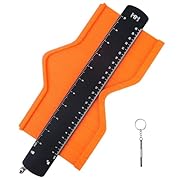I am quickly losing enthusiasm for trying to remove the stock heat trap from my water heater. I have just realized that it is already 8 years old (with a 6 year warranty). I have seen some web advice about having to use screw extractors to remove stuck heat trap nipples.
Lately I have been seeing some low cost tankless electric hot water heaters for 1/2 the cost of a modest old school tank water heater. Since my house was built with in-wall electric resistance heaters I suspect I have adequate mains power to drive a tankless heater, by repurposing those unused in-wall heater lines, now that I am heating my house with 3.5T of heat pump.
Tankless should waste even less energy, helping me save the planet.

JR









![Soldering Iron Kit, 120W LED Digital Advanced Solder Iron Soldering Gun kit, 110V Welding Tools, Smart Temperature Control [356℉-932℉], Extra 5pcs Tips, Auto Sleep, Temp Calibration, Orange](https://m.media-amazon.com/images/I/51sFKu9SdeL._SL500_.jpg)















